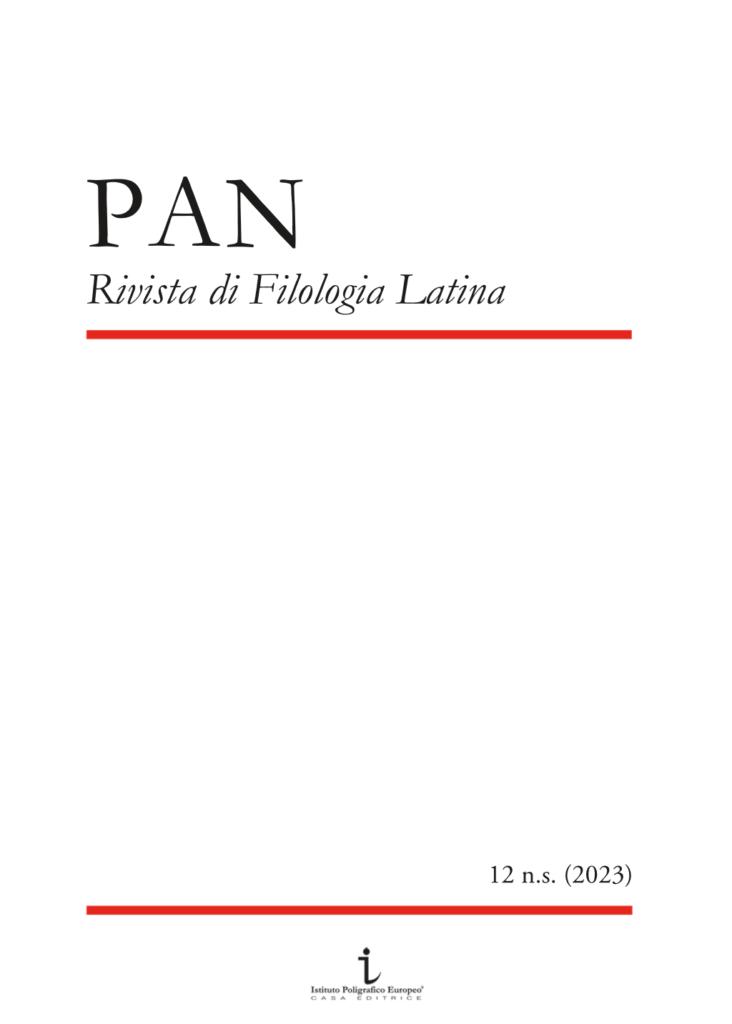Adding another article to his series on Sidonius, Francesco Montone has written ‘L’imperatore Eparchio Avito (455-456) nel panegirico di Sidonio Apollinare’, Salternum 50-51 (2023) 43-71.
Read here

Adding another article to his series on Sidonius, Francesco Montone has written ‘L’imperatore Eparchio Avito (455-456) nel panegirico di Sidonio Apollinare’, Salternum 50-51 (2023) 43-71.
Read here

Laurent Lamoine has published 471. L’évêque contre le roi, Sidoine Apollinaire défend sa cité, Cette-année-là à Clermont-Ferrand, Portet-sur-Garonne: Éditions Midi-Pyrénéennes, 2023.
Here is a sample. Bibliographical data on HAL
Résumé:
471 : Sidoine Apollinaire est élu évêque des Arvernes. Que vient faire ce sénateur, ancien préfet de Rome, à la tête de la cité arverne ? L’homme vient se mettre au service de la résistance au roi wisigoth Euric, qui cherche à s’emparer de la ville. Malgré son énergie, son entregent et ses talents de propagandiste, Sidoine Apollinaire échoue. Après un très court exil, il rentre à Clermont pour reprendre sa pastorale. Pendant des siècles, les Clermontois ne se souviennent que du saint. Seuls le combat contre les fascismes des années noires et la découverte à Clermont-Ferrand, dans les années 1980/1990, des fragments de l’épitaphe d’un Apollinaire ont réveillé le souvenir de l’évêque combattant.

Roger Green’s TTH translation of Sidonius’ Poetry is now available in paperback.

The ancient historian Dariusz Brodka passed away on 2 January 2024 at the age of 54. Director of the Institute of Classical Philology at the Jagiellonian University in Warsaw, he was a specialist of Late Antiquity, notably publishing on Ammianus Marcellinus and Procopius of Caesarea. In the 1990s, he wrote two papers on Sidonius:
– ‘Die Idee der ‘Roma Aeterna’ in den Kaiserpanegyriken des Sidonius Apollinaris’, 1997, and
– ‘Die Weltherrschaftstopik in den Kaiserpanegyriken des Sidonius Apollinaris’, 1998.

Pablo Poveda Arias writes on ‘Threatening Metropolitan Authority in Fifth-Century Gaul’ in Bishops under Threat: Contexts and Episcopal Strategies in the Late Antique and Early Medieval West, edited by Sabine Panzram and himself (Berlin: De Gruyter, 2023).
Here to the catalogue.

Pierfrancesco Porena contributes ‘Simmaco, Sidonio Apollinare e la gloriosa genealogia dei Syagrii di Lione’ to the latest open-access issue of the Annali della SNS di Pisa, Mouvements de personnes, circulation littéraire et rapports politiques, edited by Luciana Furbetta, Fabrizio Oppedisano and Céline Urlacher-Becht.

Alex Mullen and George Woudhuysen have edited a collaborative volume titled Languages and Communities in the Late-Roman and Post-Imperial Western Provinces (Oxford, 2023).
It is in open access here.

Filomena Giannotti reconsiders the interpretation of Ep. 8.3 in ‘Translation vs Decadence: Revisiting Sidonius Apollinaris’ Ep. 8, 3’, PAN 12 n.s. (2023) 115-29.
| Open access online

Timo Stickler and Umberto Roberto edited a new volume on the history of the Western Roman Empire from 395-476: Das Weströmische Reich und seine Erforschung. Neue Perspektiven, Stuttgart: Kohlhammer, 2023.
Contents here. Contributors include Rene Pfeilschifter (the continuity of the local), Hendrik Wagner (Alaric’s Itinerarium), Frank Schleicher (patria and imperium sine fine), Henning Börm (shadow emperors), Mischa Meier (the later Attila), Timo Stickler (Attila magister militum), Laura Mecella (eastern officials), Jeroen Wijnendaele (delegation), Udo Hartmann (Damaskios), Hansjoachim Andres (Olympiodorus of Thebes), Tabea Meurer (otium), Roland Steinacher (North Africa), Philippe Blaudeau (christological controversy of 448-55), Carla Sfameni (paganism after Theodosius), Ignazio Tantillo (worshipping columns), Lucrezia Spera (the emperors and Rome).

Now available: Filomena Giannotti, ‘News from a mundus senescens: Romans, Visigoths and Saxons in a Letter by Sidonius Apollinaris (8.6)’, in: José Luís Brandão, Cláudia Teixeira and Ália Rodrigues (eds), Confronting Identities in the Roman Empire: Assumptions about the Other in Literary Evidence, London: Bloomsbury, 2023, 213-36.
Can be read online in open access. Hardback forthcoming 14 December 2023.